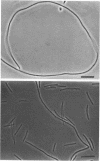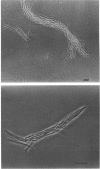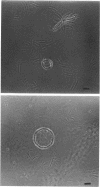Abstract
The isolation of a new thermophilic bacterium, Thermus aquaticus gen. n. and sp. n., is described. Successful enrichment requires incubation at 70 to 75 C, and the use of nutrient media relatively dilute with respect to the organic components. Strains of T. aquaticus have been isolated from a variety of thermal springs in Yellowstone National Park and from a thermal spring in California. The organism has also been isolated from man-made thermal habitats, such as hot tap water, in geographical locations quite distant from thermal springs. Isolates of T. aquaticus are gram-negative nonsporulating nonmotile rods which frequently form long filaments at supraoptimal temperatures or in the stationary phase. All isolates form a yellow cellular pigment, probably a carotenoid. A characteristic structure formed by all isolates is a large sphere, considerably larger than a spheroplast. These large spheres, as well as lysozyme-induced spheroplasts, are resistant to osmotic lysis. Deoxyribonucleic acid base compositions of four strains were determined by CsCl density gradient ultracentrifugation and found to be between 65.4 and 67.4 moles per cent guanine plus cytosine. The growth of all isolates tested is inhibited by fairly low concentrations of cycloserine, streptomycin, penicillin, novobiocin, tetracycline, and chloramphenicol. Nutritional studies on one strain showed that it did not require vitamins or amino acids, although growth was considerably faster in enriched than in synthetic medium. Several sugars and organic acids served as carbon sources, and either NH4+ or glutamate could serve as nitrogen source. The organism is an obligate aerobe and has a pH optimum of 7.5 to 7.8. The optimum temperature for growth is 70 C, the maximum 79 C, and the minimum about 40 C. The generation time at the optimum is about 50 min. The possible relationships of this new genus to the myxobacteria, flexibacteria, and flavobacteria are discussed.
Full text
PDF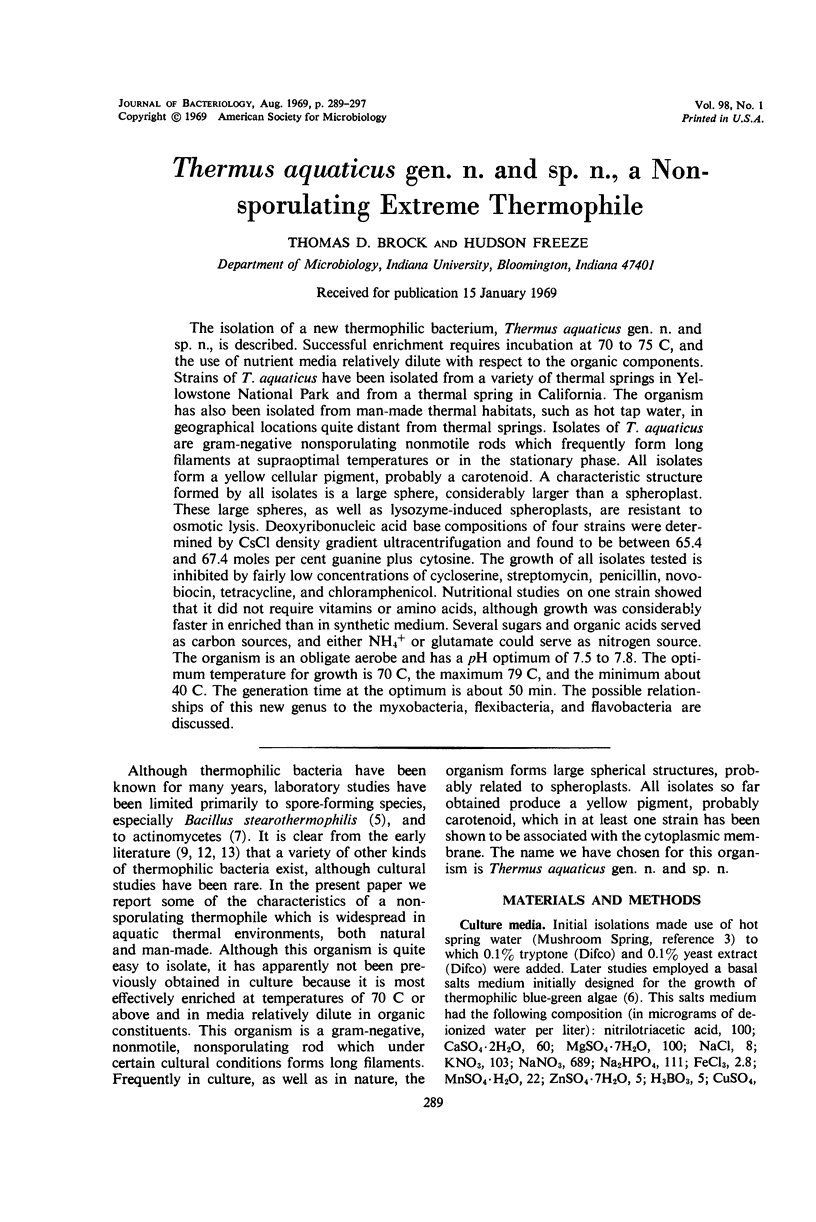
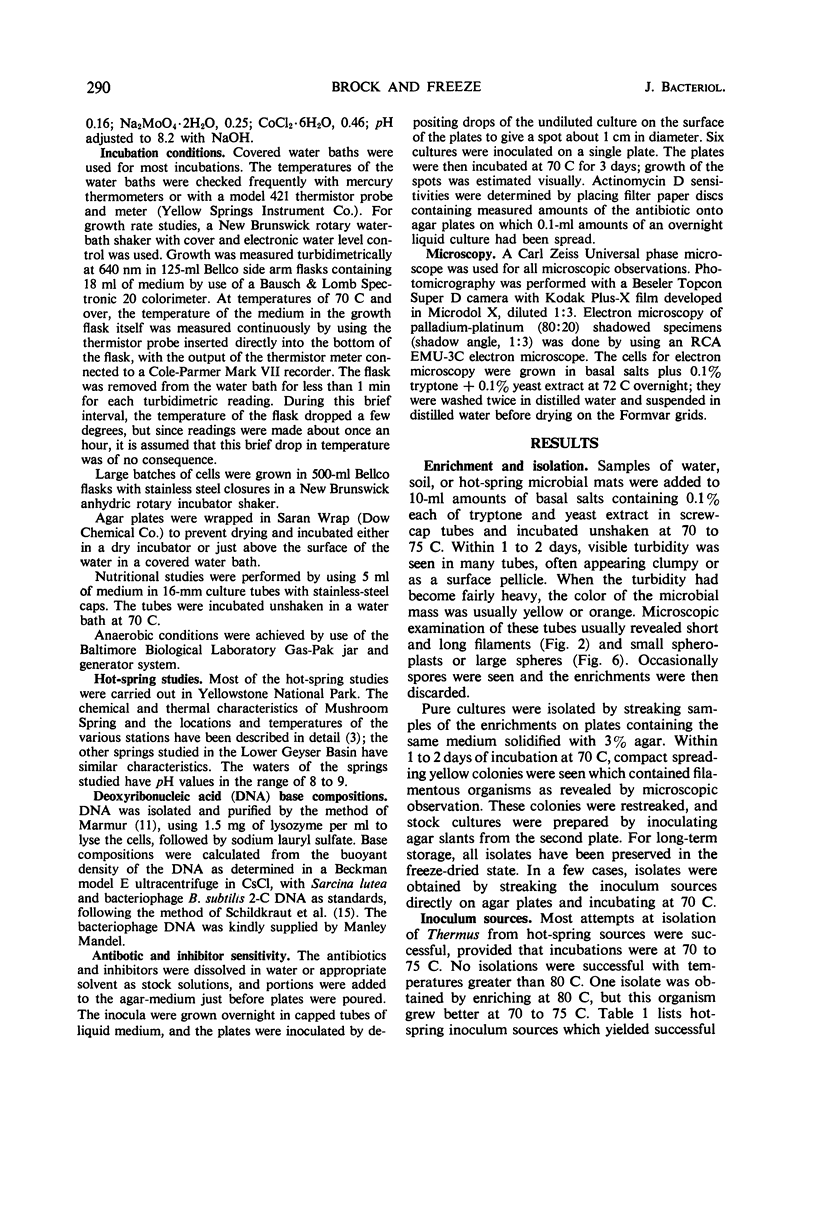
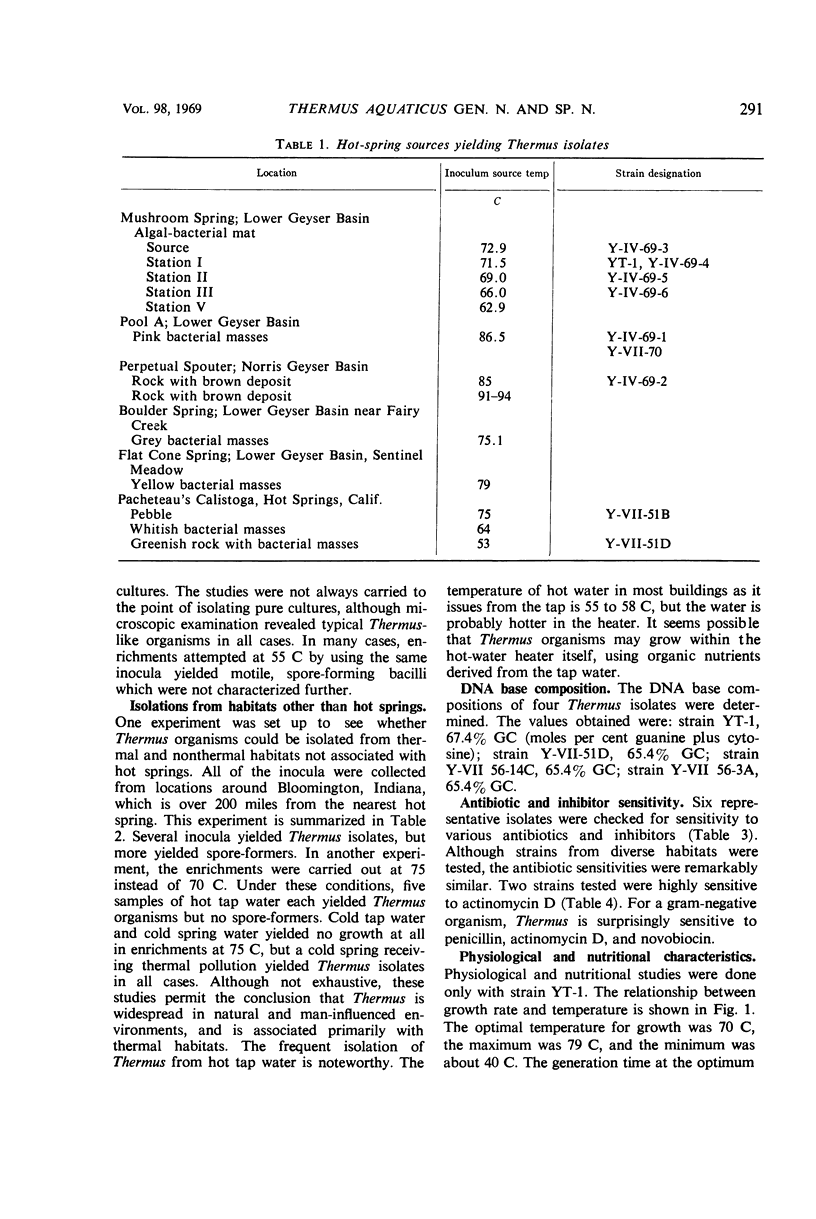

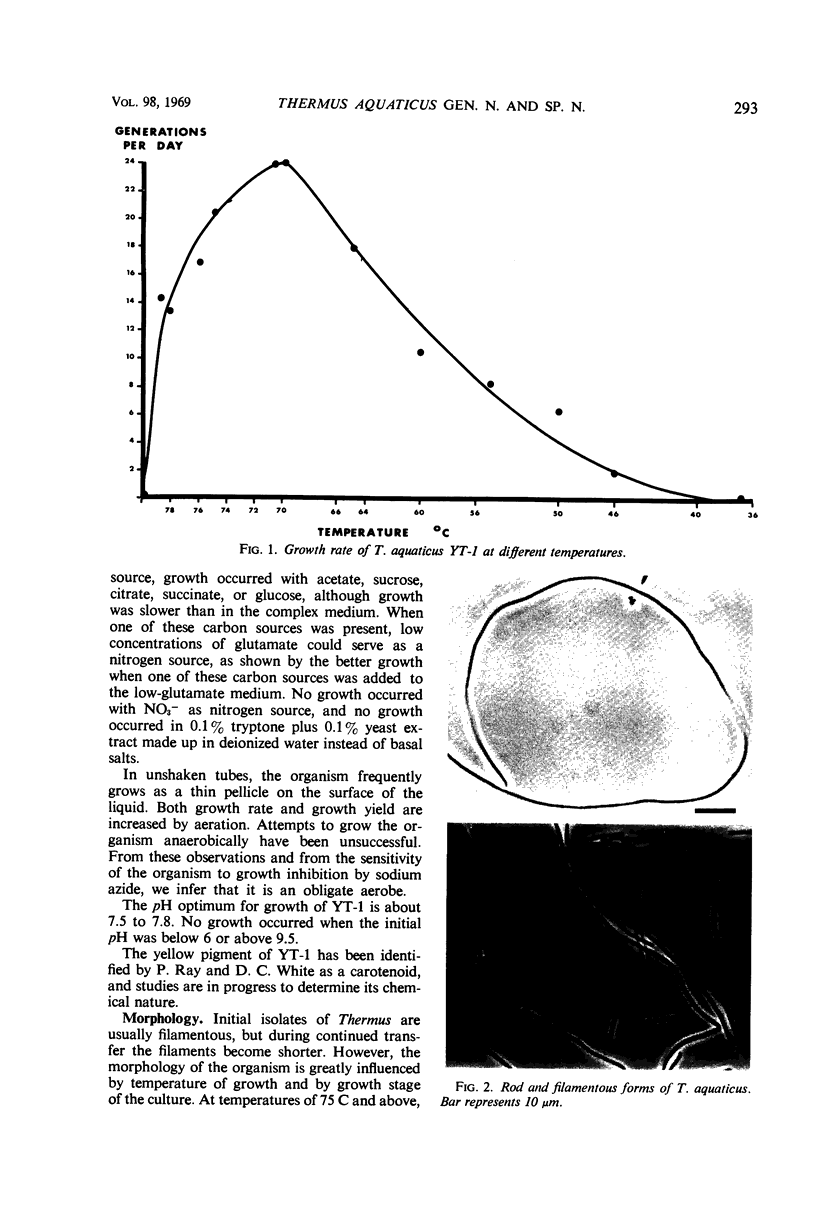

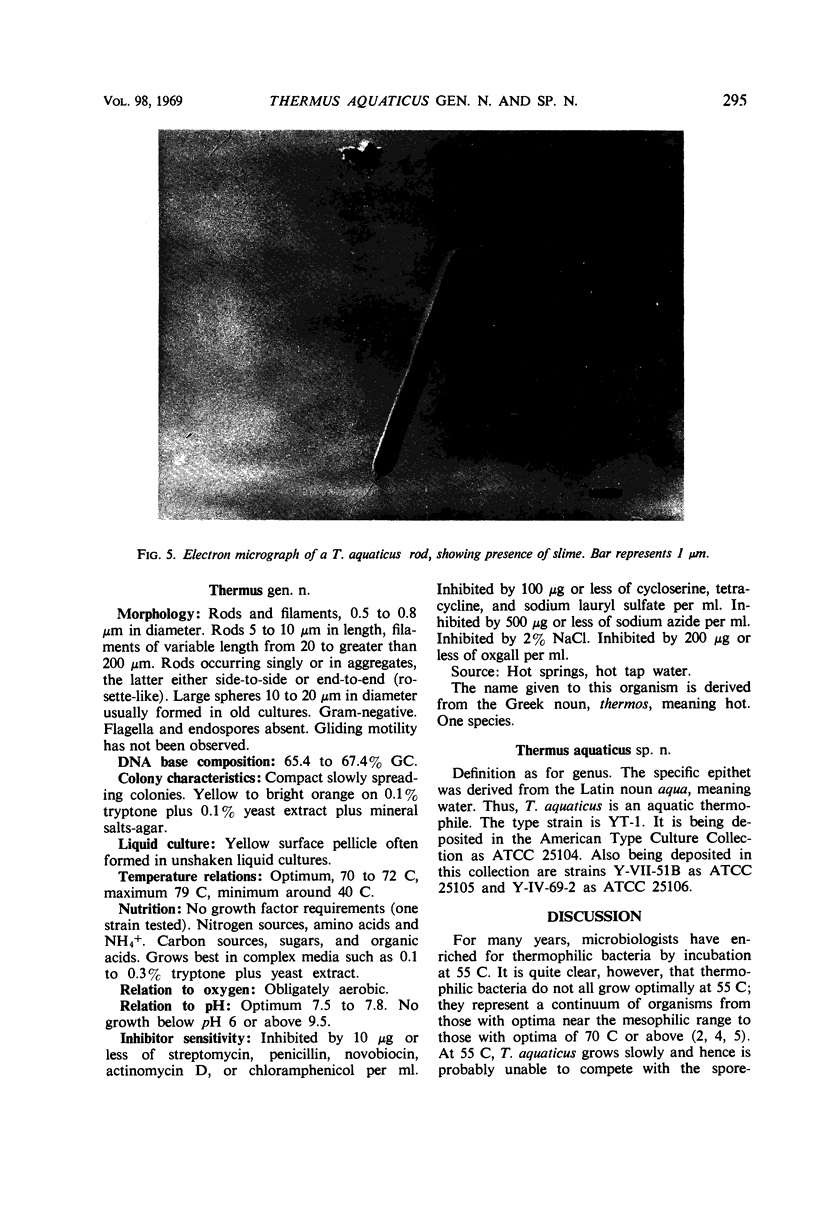
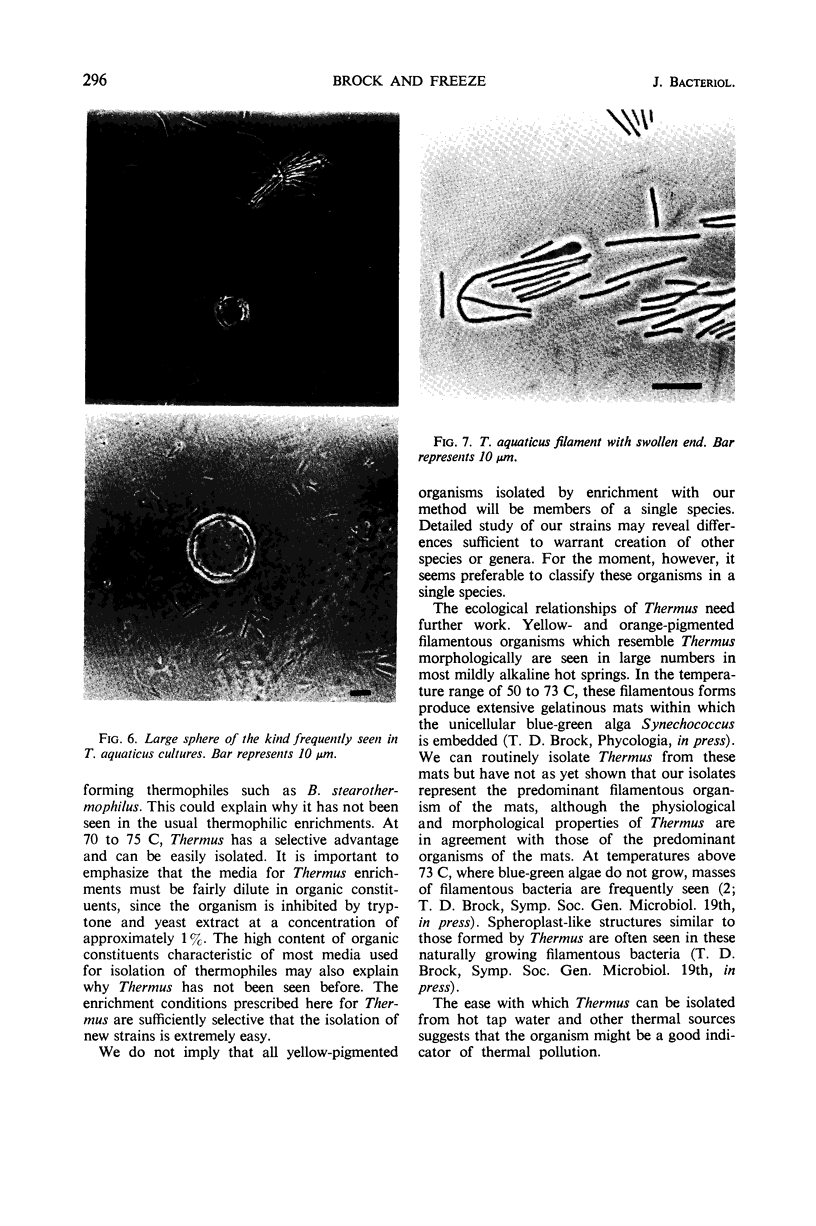
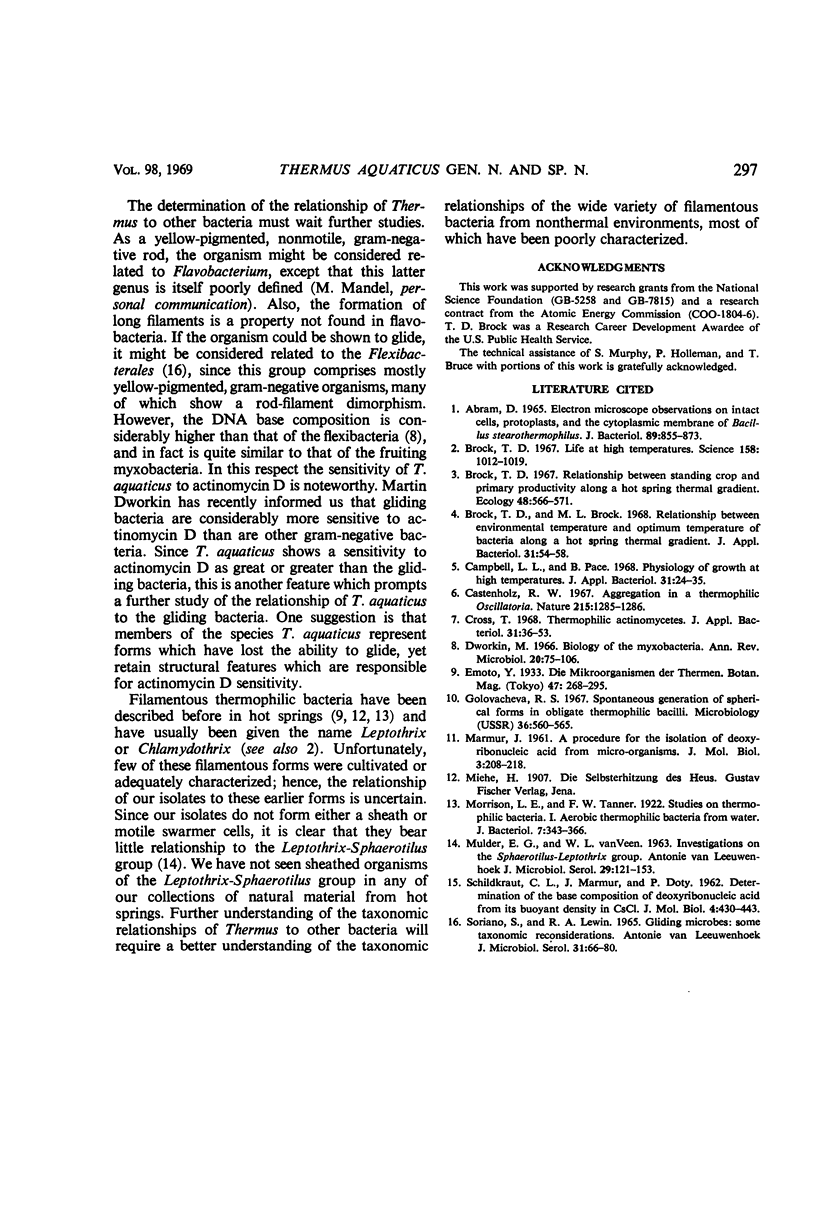
Images in this article
Selected References
These references are in PubMed. This may not be the complete list of references from this article.
- ABRAM D. ELECTRON MICROSCOPE OBSERVATIONS ON INTACT CELLS, PROTOPLASTS, AND THE CYTOPLASMIC MEMBRANE OF BACILLUS STEAROTHERMOPHILUS. J Bacteriol. 1965 Mar;89:855–873. doi: 10.1128/jb.89.3.855-873.1965. [DOI] [PMC free article] [PubMed] [Google Scholar]
- Brock T. D. Life at high temperatures. Evolutionary, ecological, and biochemical significance of organisms living in hot springs is discussed. Science. 1967 Nov;158(3804):1012–1019. doi: 10.1126/science.158.3804.1012. [DOI] [PubMed] [Google Scholar]
- Campbell L. L., Pace B. Physiology of growth at high temperatures. J Appl Bacteriol. 1968 Mar;31(1):24–35. doi: 10.1111/j.1365-2672.1968.tb00338.x. [DOI] [PubMed] [Google Scholar]
- Cross T. Thermophilic actinomycetes. J Appl Bacteriol. 1968 Mar;31(1):36–53. doi: 10.1111/j.1365-2672.1968.tb00339.x. [DOI] [PubMed] [Google Scholar]
- Dworkin M. Biology of the myxobacteria. Annu Rev Microbiol. 1966;20:75–106. doi: 10.1146/annurev.mi.20.100166.000451. [DOI] [PubMed] [Google Scholar]
- MULDER E. G., VAN VEENW INVESTIGATIONS ON THE SPHAEROTILUSLEPTOTHRIX GROUP. Antonie Van Leeuwenhoek. 1963;29:121–153. doi: 10.1007/BF02046045. [DOI] [PubMed] [Google Scholar]
- Morrison L. E., Tanner F. W. Studies on Thermophilic Bacteria: I. Aerobic Thermophilic Bacteria from Water. J Bacteriol. 1922 May;7(3):343–366. doi: 10.1128/jb.7.3.343-366.1922. [DOI] [PMC free article] [PubMed] [Google Scholar]
- SCHILDKRAUT C. L., MARMUR J., DOTY P. Determination of the base composition of deoxyribonucleic acid from its buoyant density in CsCl. J Mol Biol. 1962 Jun;4:430–443. doi: 10.1016/s0022-2836(62)80100-4. [DOI] [PubMed] [Google Scholar]
- SORIANO S., LEWIN R. A. GLIDING MICROBES: SOME TAXONOMIC RECONSIDERATIONS. Antonie Van Leeuwenhoek. 1965;31:66–79. doi: 10.1007/BF02045876. [DOI] [PubMed] [Google Scholar]



